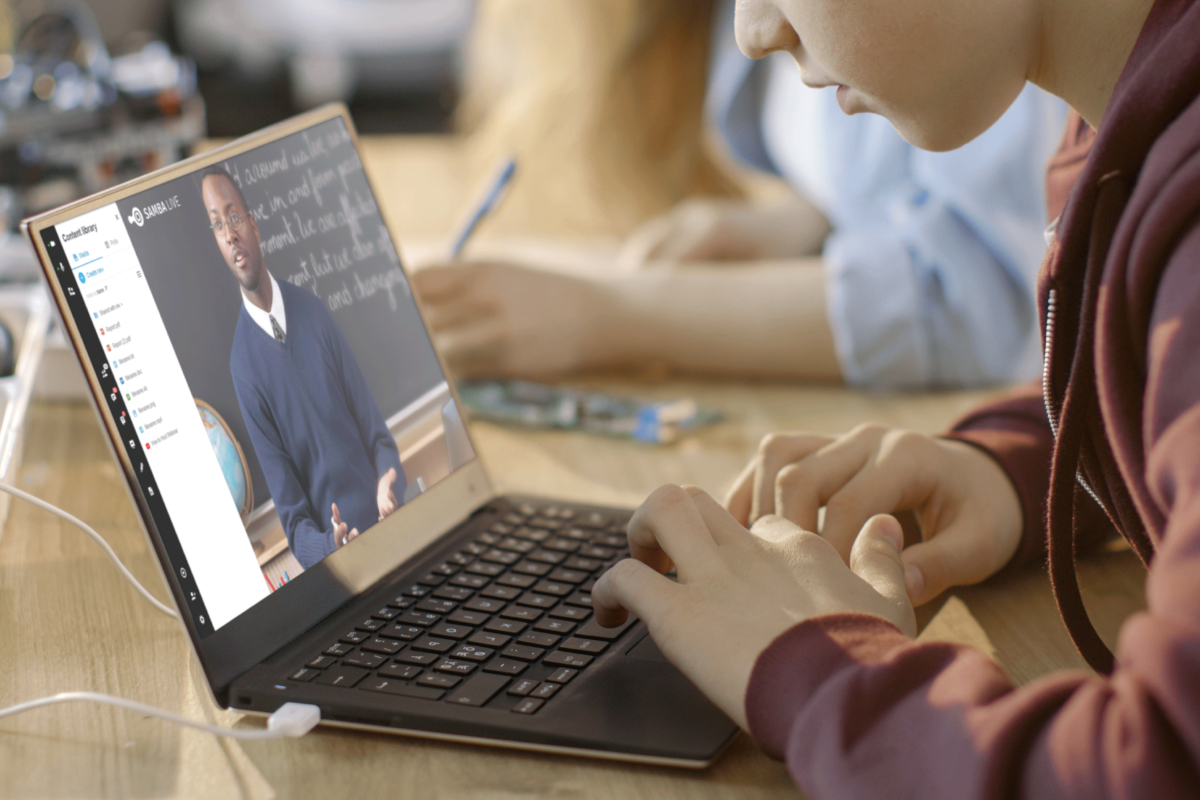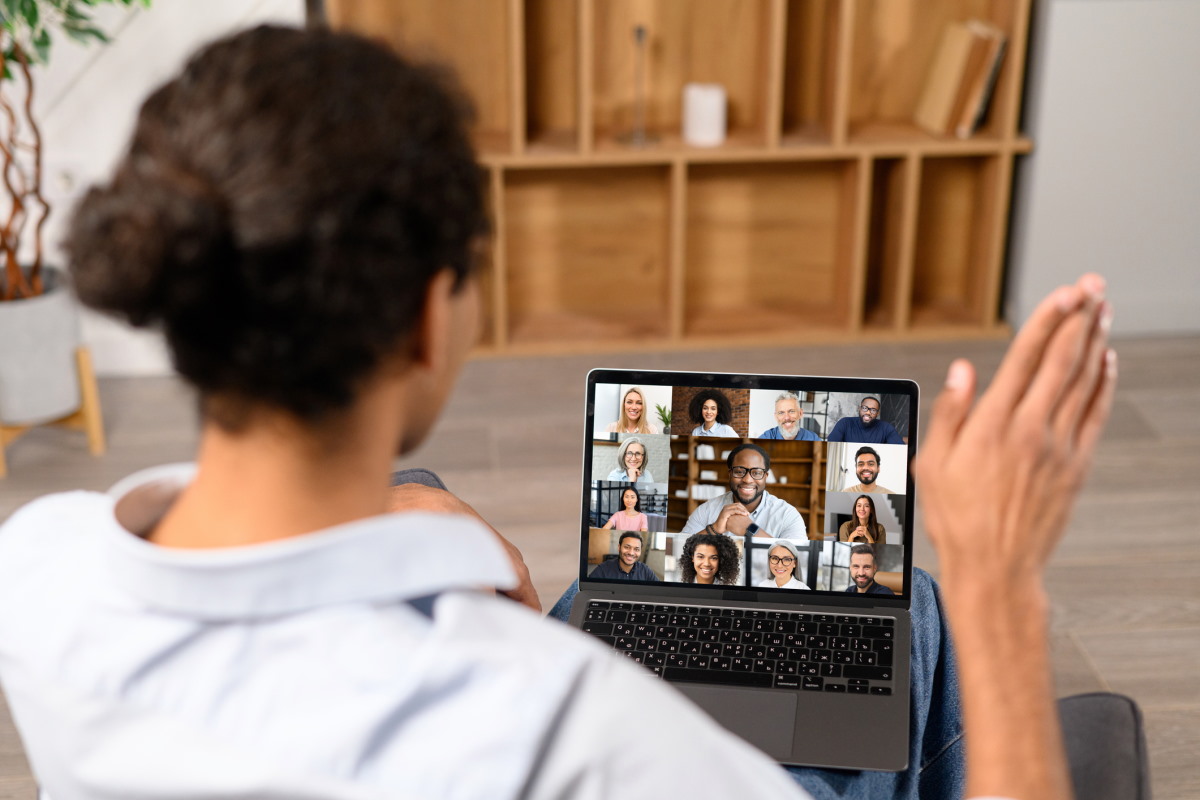How to Fix Microphone Echo During Video Conferencing?
How many video conference calls have you attended that got derailed by an echoing microphone? More than just a few, we would wager. 49% of US employees say they attend at least two weekly meetings disrupted by technical issues.
Table of contents
- Echo or Reverb?
- Use headphones with a built-in microphone
- Mute microphones when not speaking
- Make sure people aren’t bunched up
- Check your speakers or microphone aren’t too loud
- Make sure you are using the right microphone
- Upgrade your old hardware/software
- Leveraging advanced video conferencing with Digital Samba
- Test your microphone before the meeting
- Final Thought
“Who is that echoing?”, “Sorry, I think it’s me. How do I get my mic to stop echoing?” “why is the echo still there?”, “can anyone remember what we were talking about?”
We’ve all been there, and it’s one of the most annoying experiences during a video conference call. Technical issues are one of the biggest obstacles blocking successful remote collaboration and event hosting.
Attendees place audio disruption high on the list of things that ruin the video conference experience.
An echoing microphone is extremely disruptive. Ignoring microphone echo during one of your meetings or events is a bad call. All that hard work you spent organising your webinar or video conference could be for nothing if you let a small issue irritate your attendees.
We want to ensure that you can always deal with this issue when it happens in your video calls.
Here are our top 8 tips on how to fix echo on mic during a videoconference. Memorise these tips, and you will always have an answer for this irritating interruption.
Quick tip: If you can hear an echo during a video call, you aren’t causing it. Echo occurs because the sound is transmitted from their speakers back into their microphone. The person causing the echo is often unaware they are the cause.

8 Tips on How to Fix how to fix mic echo
Echo or Reverb?
Echo and reverb are quite similar and easily mixed up. Learning how to tell them apart is useful for any video meeting organiser.
Echo happens when sound comes out of a speaker and enters a nearby microphone. It can be particularly infuriating for the current speaker. No one wants to hear an echo of their own voice while presenting important materials. Our 8 tips will focus on how we can fix echo problems.
Reverb is essentially the same as an echo but slightly different. Reverb is caused when sound comes out of a speaker, bounces around the room, and then enters a microphone. Reverb can be harder to deal with because it is usually caused by the room environment.
Typically we see reverb occurring in rooms with many hard, flat surfaces. You can improve the reverb by bringing the mic closer to the speaker or adding acoustic treatments to walls.
Use headphones with a built-in microphone
One of the simplest, tried-and-tested ways to prevent echo is to use headphones with a built-in microphone. Headphones can remove echo because they deliver sound directly into your ears rather than filling the room. They also place the mic close to your mouth, which reduces the chance of any reverb.
Headphone users constantly wonder why they aren’t used by the entire video conferencing community. The pandemic saw video communication explode in popularity.
Lots of people started to attend video conferences for the first time in their lives. Most of these people weren’t used to wearing headphones for long periods or didn’t own them. You should never assume that everyone will have a headset. You need to be aware of other ways of tackling echo.
Mute microphones when not speaking
Muting your microphone when not speaking and asking others to do the same is one of the quickest ways to fix echo. The more people there are in your video call, the more important this tip becomes. Many people regard keeping yourself muted when not talking as a basic matter of video conferencing etiquette.
Most of us have experienced being in large calls with too many people unmuted. You can hear every cough, sneeze, dog bark and doorbell. It is very distracting and annoying. Here’s a tip you can use to find out who is causing the echo.
Ask your attendees to mute themselves and then ask them to unmute one by one. Once you have identified the culprit, you can quickly end that pesky echo.
Make sure people aren’t bunched up
If attendees physically attending a hybrid video meeting are too close together, this can cause an echo. The simplest way to deal with this is to check that everyone has some distance between themselves or their devices. Sitting too close together can cause someone else’s microphone to pick up sound from your device and vice versa. If your team is fully remote, this won’t apply to you.
Check your speakers or microphone aren’t too loud
If the volume on your external speakers is too high, this can cause the microphone echoing through the speakers. If you have been identified as the echo culprit, try turning down your speakers and see if it solves the problem.
Alternatively, you can also try turning down the output level of your headset. Sometimes your microphone can cause an echo by being too sensitive or loud.
Make sure you are using the right microphone
Don’t overlook this tip because it’s a common mistake that many people make. If you work for a remote team, you probably use multiple devices during your working day. Before joining a video conference call, you should always double-check you are using the right one.
Using the wrong device can cause an echo. For example, if you forgot to select your headset microphone, another device could be repeating what you are saying through your microphone, causing an annoying echo.
Top-end video conferencing platforms like Digital Samba help you avoid this issue. You can easily adjust your audio settings and select and test your microphone from within the platform.
Upgrade your old hardware/software
If none of these tips work for you, and your hardware or software is outdated, they could be the problem. Sometimes there is no other alternative but to get yourself an upgrade. Newer headphones come with added features such as noise-cancelling and noise suppression.
If you are using an ancient, ineffective video conferencing software platform, this could be the cause of your woes. Older platforms often have limited audio settings and low call quality.
You can get around this problem by upgrading to a modern and effective video conferencing platform like Digital Samba. Our platform offers attendees advanced audio and microphone settings to help them avoid the dreaded echo.
Leveraging advanced video conferencing with Digital Samba
In addition to the aforementioned tips on how to get rid of echo on mic, choosing the right video conferencing platform is a pivotal step to addressing audio issues like echoing. Digital Samba, an EU-hosted, GDPR-compliant video conferencing API and SDK provider, presents a robust solution. Our advanced video conferencing software, embedded with end-to-end encryption, ensures a secure, reliable, and smooth communication experience.
Digital Samba Embedded allows for the integration of our video conferencing technology directly into your existing software products or websites, providing a seamless user experience without any disruption to your brand identity. This capability allows users to directly connect from within your own application or web platform, bypassing the need to download any third-party software.
In the realm of audio quality, Digital Samba's platform performs diligently to ensure minimal disruptions. Our end-to-end encryption not only makes the communication secure but also eliminates any external interference that might cause echo.
Besides this, our platform also supports selective muting and active speaker detection, two features that can significantly reduce the chance of experiencing echo. We also provide detailed user guides and prompt customer support to help you swiftly manage any audio-visual challenges.
By opting for Digital Samba's video conferencing technology, you elevate your communication standards to an unrivalled level of quality, thereby ensuring a professional, efficient, and effective meeting, free from concerns such as echoing microphones.
Test your microphone for problems before the meeting
One of the best ways to avoid echo is to prevent it from happening in the first place. You do this by checking our audio and microphone settings before the meeting. You could suggest that attendees also do this in your meeting invite. Here are the best ways you can make sure you are ready for the big meeting:
Check you are using the correct device
Check your speaker volume and microphone output
Decide if you should be muted when joining the call or not
Find a quiet spot with minimal background noise
Check that there is adequate space between you and any colleagues
Test your microphone before the meeting
If the meeting is particularly important, set up a dummy meeting with just yourself to guarantee everything is working as it should before joining.
If all else fails and you still have issues, perform a hard reset and restart everything. It might seem simple, but we all know how well this can work!
Final thought
Audio problems can quickly ruin any meeting. In a worst-case scenario, attendees could leave frustrated and even doubt the professionalism of your company. Knowing how to fix an echoing microphone during a video conference call is essential for any organiser.
You should never let an echo problem in your conference call go unchecked. People will sometimes just grin and bear the problem while being secretly annoyed. As the organiser, you must ensure that the meeting proceeds smoothly and professionally.
You will be much better off if you just delay the meeting for a minute or two and fix the issue. If you always remember these 8 tips, you will be in a good position to deal with any echoing microphones.
Digital Samba's video conferencing software makes it easy to solve an echoing microphone. Visit Digital Samba to learn more about our services, or request a demo today!
Share this
You May Also Like
These Related Stories

What is Echo Cancellation?

Best Headphones for Video Conferencing in 2026


